With today’s release of the GeForce RTX 3070 FE (Founders Edition), NVIDIA is simultaneously introducing a smaller chip, the GA104, which is smaller in area and therefore brings all the known advantages. Higher yield rate and thus better availability, improved efficiency and somewhat cheaper to produce. To what extent the GeForce RTX 3070 FE can exactly profit from this, today’s review will show. The omens are not even bad, even if NVIDIA will soon have to compete with AMD’s Radeon RX 6800XL. But in the end, only the square counts and the front yard has already been busily planted with software and features. Whether the casual gamer will be able to appreciate this at all is of course another matter. He just wants to play. Or not?
The NVIDIA GeForce RTX 3070 is based on GA104-300 and is in many respects, I can spoil this here, even faster than a current GeForce RTX 2080 Ti, but is priced with a RRP of 499 USD instead of the former 999 USD of the RTX 2080 Ti. For the GeForce RTX 3070, NVIDIA has enabled a total of 46 SM units, resulting in a total of 5888 CUDA cores. In addition to CUDA cores, NVIDIA’s GeForce RTX 3070 is also equipped with next-generation RT cores (ray tracing), Tensor cores, and the all-new SM or streaming multiprocessor units. In terms of memory, the GeForce RTX 3070 has 8 GB of GDDR6 memory with a speed of 16 Gbps, which has a cumulative bandwidth of 512 Gbps on the 256-bit interface.
If you now extrapolate the 46 SM, the already mentioned 5888 CUDA cores result. Ideally and only if all units are allowed to work with FP32. However, the gap to the GeForce RTX 3080 is quite large, so that many still dream of a GeForce RTX 3070 Ti even now. As a counterpart for a Radeon RX 6800 XL, which at least for rasterization should be rated more highly, such a further slimmed down GA102 would certainly be an option, but this is purely speculative and could later be realized together with more memory than a supersized RTX 3070, in whatever process. But these are all pure and unproven speculations and we live in the here and now.
So it’s really exciting to see what NVIDIA is now offering as a complete package, so today (and also at the Radeon launches), I’m going to explore not only the gaming environment, but also the production area. Because only then can a product really be justified. This also applies to the electrical conversion, the circuit board, power consumption and cooling. Reading material is therefore already provided.
The GeForce RTX 3070 Founders Edition
Now it goes straight to the preserves without any frills. The case of the card is, as always, a pretty clever mix of light metal, plastic and hardware, which feels great and of high quality and also looks good, but is still kept a bit simpler than the bigger sisters. The design with the 3.5 cm installation depth plus the 4 mm backplate makes this card a small and cute dual-slot design with all known advantages and disadvantages. It looks really good, feels valuable and you can really like the visual implementation.
At just under 1000 grams, the card is almost a lightweight. The length of 24.5 cm is nice and short, and the installation height of 10.5 cm from the upper edge of the PCIe slot with installed card to the top of the cover is quite low. The funny 12-pin Micro-Fit 3.0 on the top side is this time installed horizontally and points to the back. Here you can connect the included 12-pin adapter to which the two conventional 6+2-pin plugs fit, which you have known for years. You will see on the next page the board that you can almost shoot at sparrows with cannons. You can also find more details about the cooler design there. Nvidia has left out the NVLINK port.
NVIDIA is again doing without the USB Type C on the slot panel, probably also because the VR hype has cooled down considerably in the meantime. Interestingly, AMD will re-record this feature on Big Navi, while it seems to have already finished here. The new HDMI 2.1 connection should not be missing, and of course the three current DisplayPorts. The very large cooling openings show where the wind is blowing from and with that we would be completely finished with the exterior.
The data of the Founders Edition is shown again in the current GPU-Z screenshot, the rest I already mentioned above. The 1500 MHz base and the 1725 MHz boost clock are already as well known as the 1745 MHz memory clock and the memory expansion with 8 GB on the 256-bit interface.
Here I also have a table for all statisticians among you, before it really gets going on the next page.
Test system and evaluation software
The benchmark system is new and is now no longer in the laboratory, but back in the editing room. I now also rely on PCIe 4.0, the matching X570 motherboard in the form of a MSI MEG X570 Godlike and a selected Ryzen 9 3900XT, which is water cooled and overclocked up to 4.5 GHz. In addition, there is the matching DDR4 3600 RAM from G.SKILL in the form of the TridentZ Neo, as well as several fast NVMe SSDs. For direct logging during all games and applications I use NVIDIA’s PCAD, which increases the comfort tremendously.
The measurement of power consumption and other things takes place here in the special laboratory on a redundant and identical in every detail test system then double-tracked using high-resolution oscillograph technology…
…and the self-created, MCU-based measurement setup for motherboards graphics cards (pictures below), where in the end the thermographic infrared images are also taken with a high-resolution industrial camera in an air-conditioned room. The audio measurements take place outside in my chamber.
I have also summarized the individual components of the test system in tabular form:
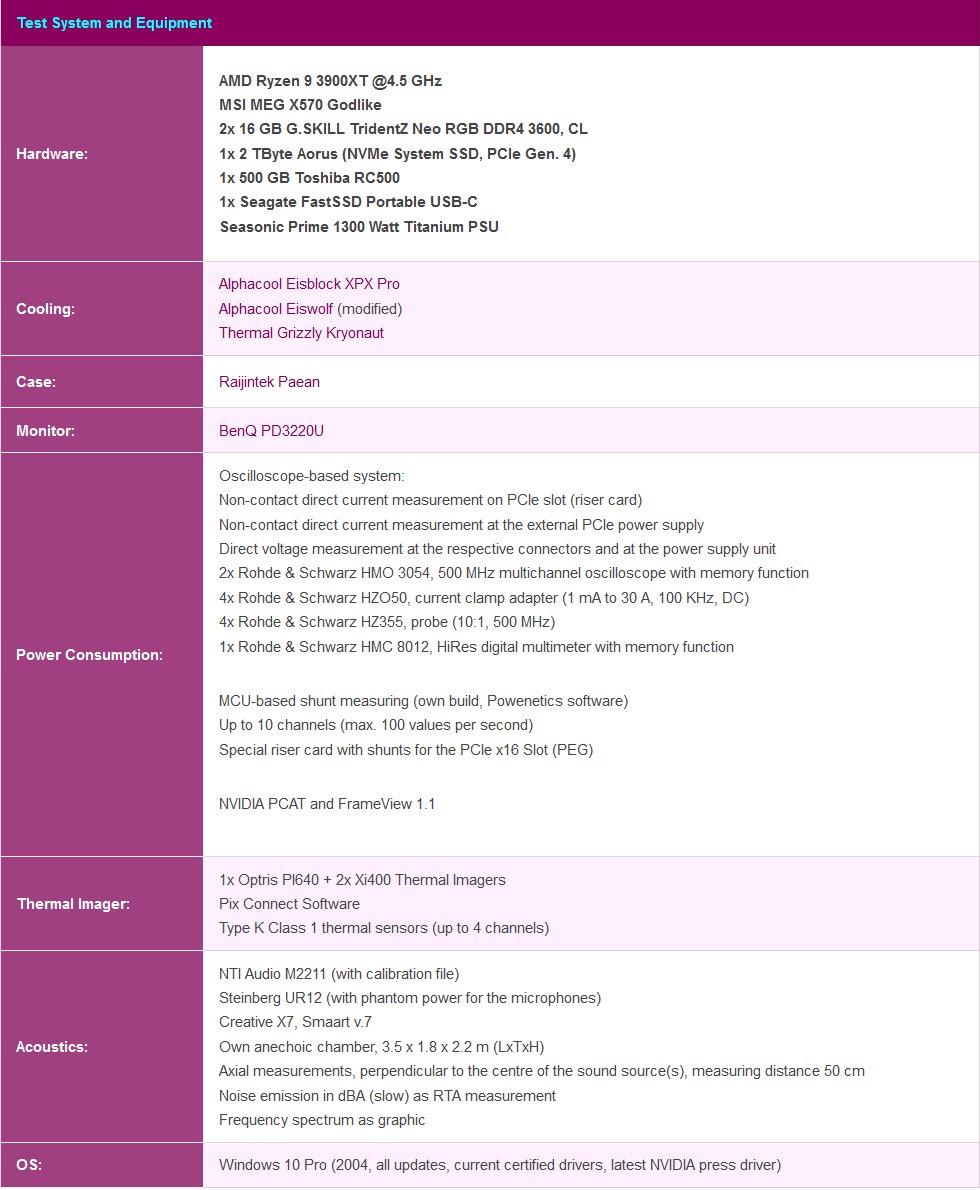
- 1 - Introduction, Technical Data and Test System
- 2 - Teardown, PCB and Cooler
- 3 - Grafik-Performance: Gaming Performance Full-HD & RTX
- 4 - Gaming Performance WQHD
- 5 - Gaming-Performance Ultra-HD & DLSS
- 6 - In-Depth Analysis for all Games
- 7 - Frame Times vs. Power Draw
- 8 - Workstation: CAD
- 9 - Studio: Rendering
- 10 - Studio: Video and Image Editing
- 11 - Power Consumption and Efficiency per Game
- 12 - Power Consumption Summary and PSU Recommendation
- 13 - Temperatures, Clocks and Infrared Tests
- 14 - Geräuschemission / Noise
- 15 - NVIDIA Broadcast - More as a Gimmick?
- 16 - Final Words and Conclusion














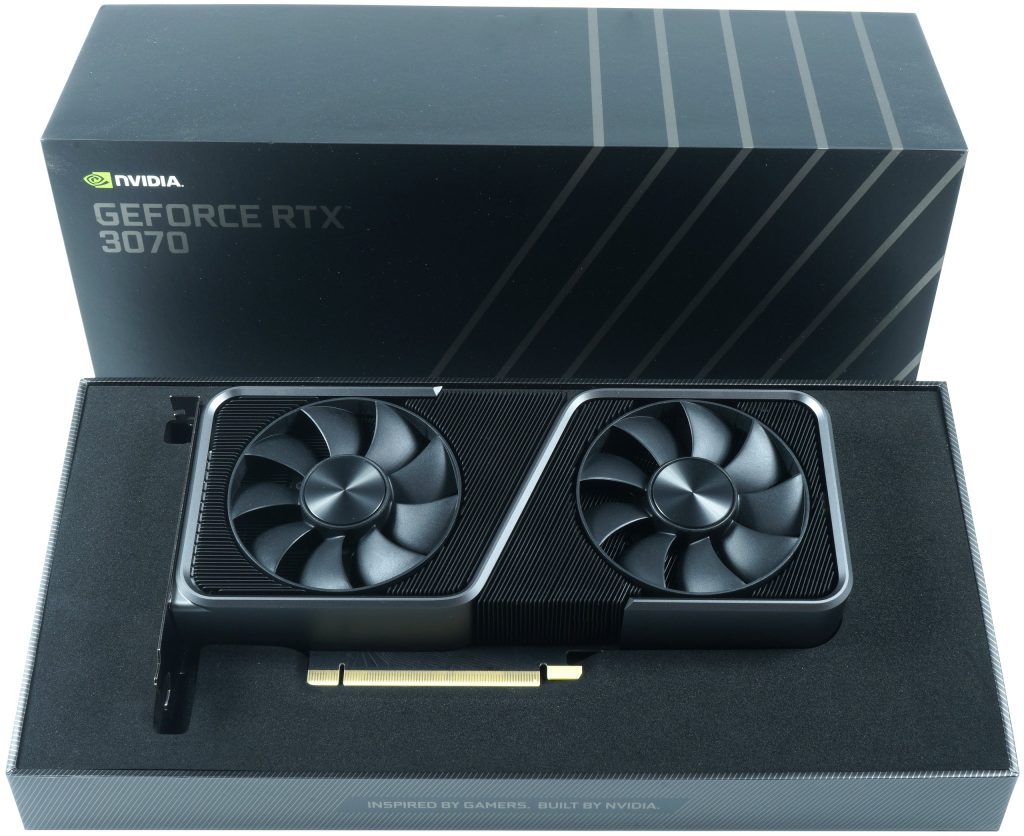
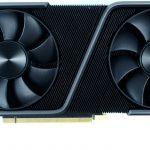
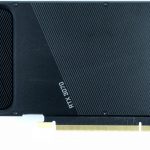
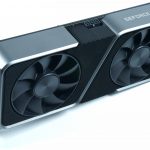
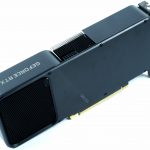
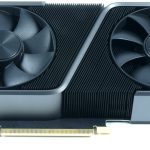
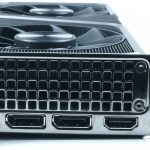
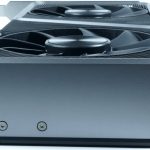
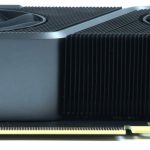
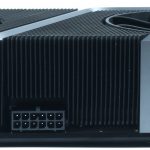
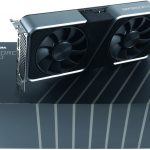
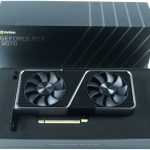
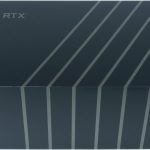


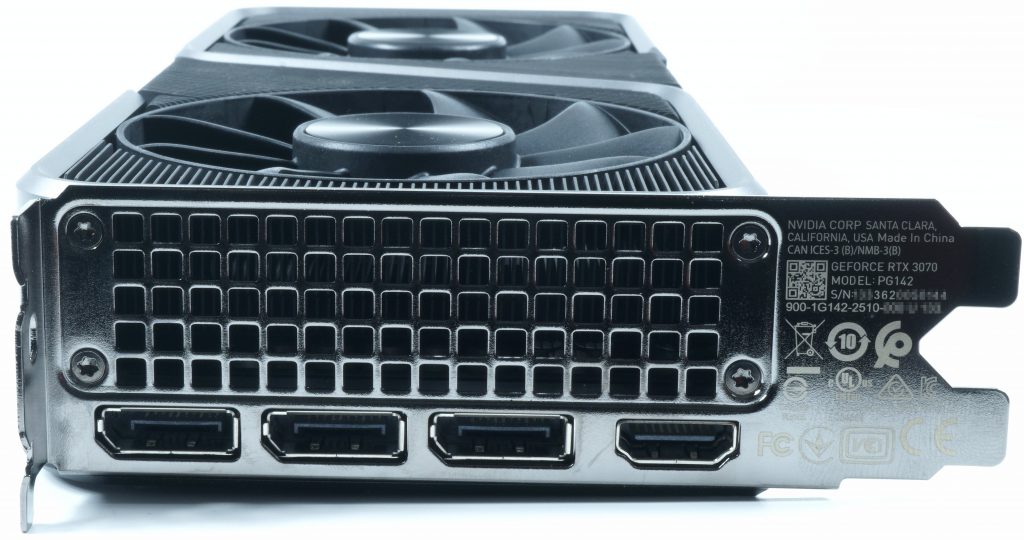
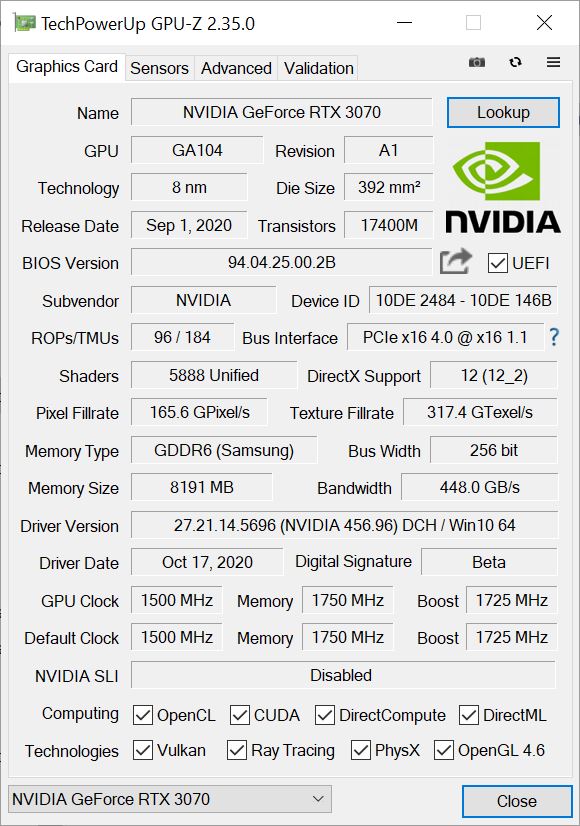

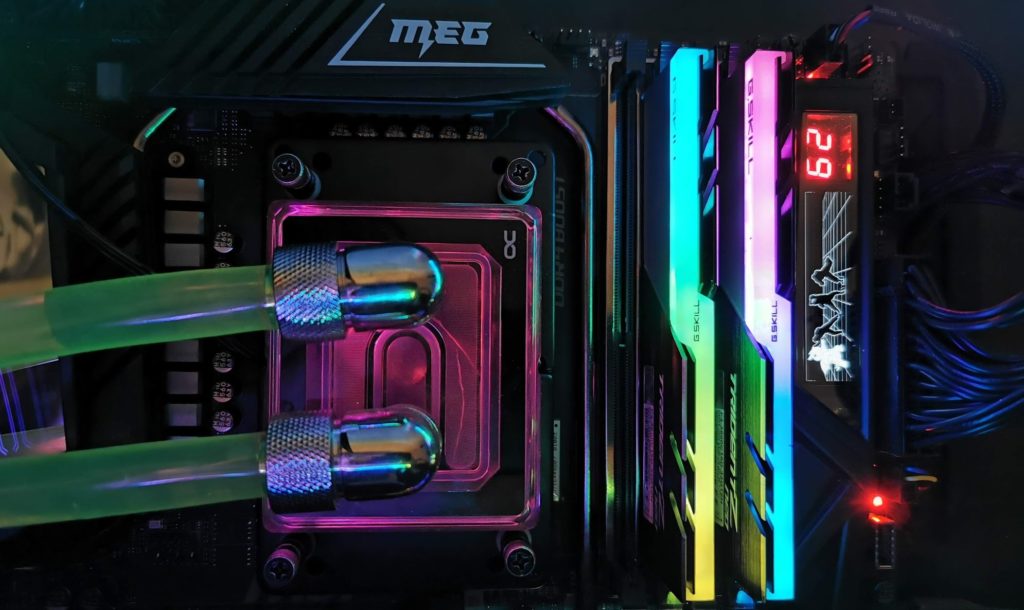
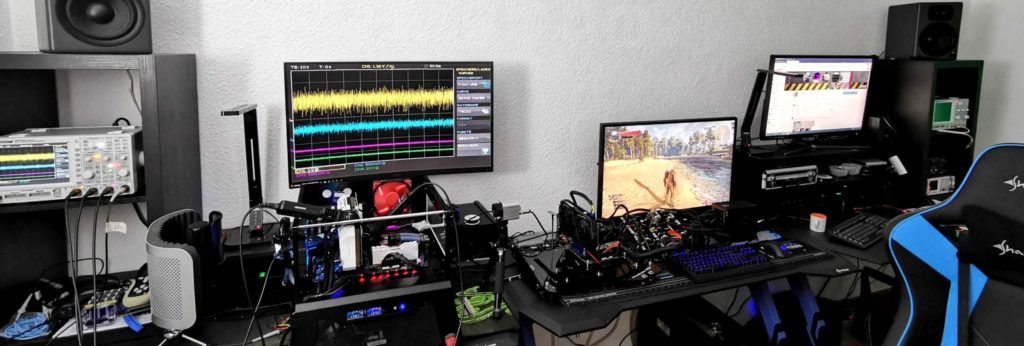
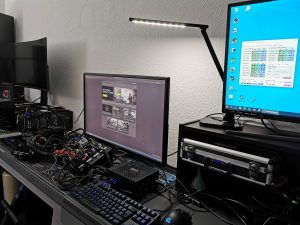
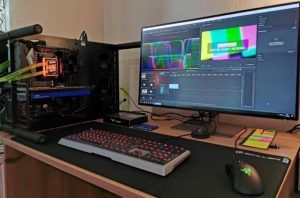
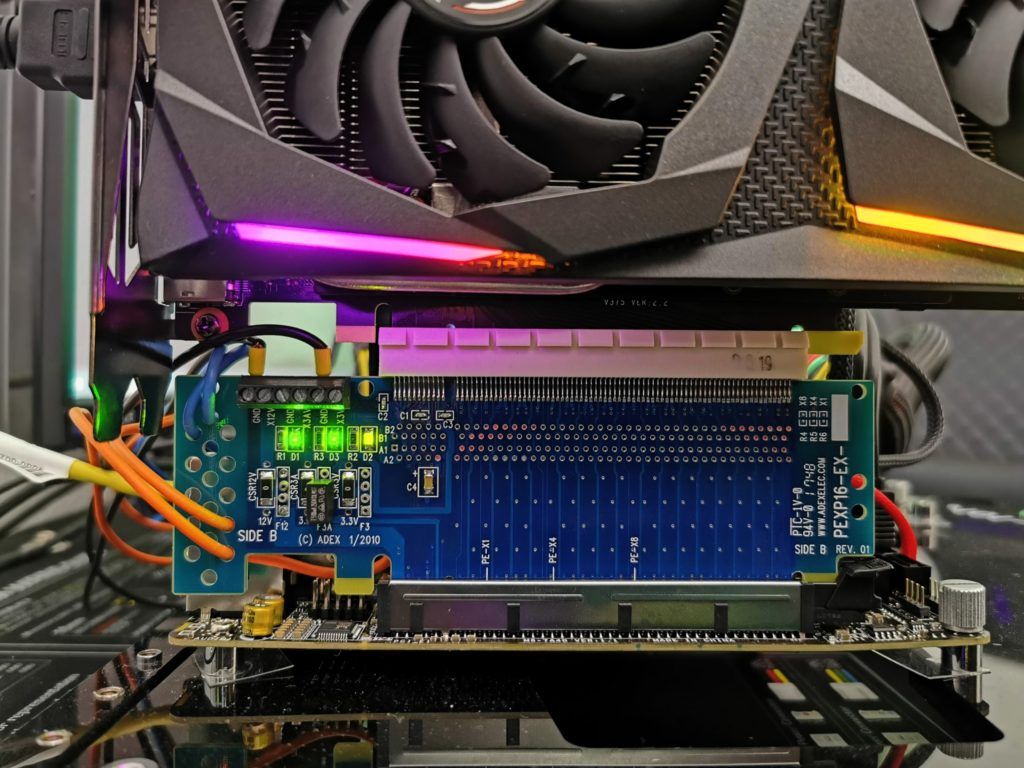



















Kommentieren